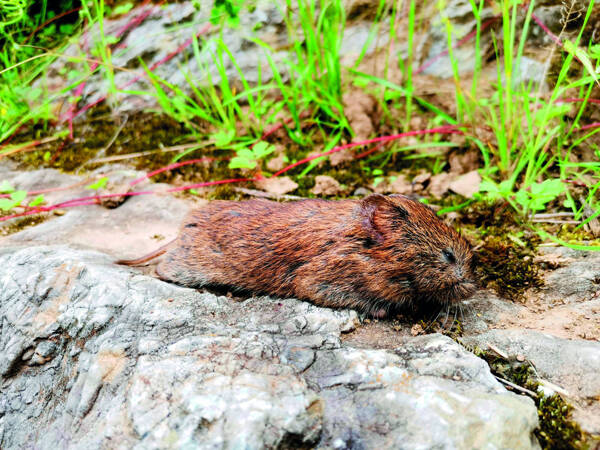Proedromys bedfordi
IUCN
LCBasic Information
Scientific classification
- name:Proedromys bedfordi
- Scientific Name:Proedromys bedfordi,Arvicolinae
- Outline:Rodents
- Family:Rodentia Cricetidae Microtus
Vital signs
- length:Approx. 110 mm
- Weight:
- lifetime:
Feature
The body is similar to that of a vole, but slightly larger than an ordinary vole, with smaller ears hidden in the fur. The outer side of the upper incisors has a row of shallow longitudinal grooves.
Distribution and Habitat
Endemic to China. Only found in Minxian, Gansu, Heishui, Sichuan and Jiuzhaigou.
The groove-toothed vole lives in the grasslands at the edge of coniferous and broad-leaved mixed forests at an altitude of about 2,500 meters. It feeds on the green parts of plants and seeds. It is a rare species in the province and does not cause much harm.
Appearance
The appearance is similar to other voles, with an average adult body length of 110mm, an average tail length of 40mm, an average hind leg length of 19mm, and an average ear height of 16.9mm. The average total skull length is 27mm, the skull base length is 25mm, and the zygomatic width is 15mm. However, there are obvious morphological differences from other voles: the upper incisors of the groove-toothed vole are wider, with a total width of 2.5mm for the two incisors; the exposed part of the lower incisors is very short, less than 4mm; the total length of the lower incisors is also very short, only 77% of the total length of the mandible. The last tooth ring of the third upper molar is bean-shaped, and the other tooth rings are fan-shaped; the skull is abnormally raised, and the snout is short. The width of the upper incisors of other genera of voles in the same subfamily is less than 2.44mm; the exposed part of the lower incisors is more than 4.5mm; the ratio of the total length of th
Details
The species status is stable, but the genus status is somewhat controversial. It was first named as the genus Microtus. Some people believe that it belongs to the genus Microtus (<Microtus>), while others believe that it belongs to the genus Neodon (<Neodon>). Molecular systematic studies have confirmed that it belongs to the genus Microtus. For a long time, this genus was a single genus and a single species, with only one species, Microtus, which is very rare and scarce. The species was named in 1911. Before 2007 (nearly 100 years), there were only three specimens in the world (No. 1 type specimen of the British Museum; No. 1 specimen of the Sichuan Provincial Center for Disease Control and Prevention; No. 1 specimen of Lanzhou University). From 2007 to 2020, the Sichuan Academy of Forestry collected this species many times during surveys in Heishui County and Jiuzhaigou County, Sichuan, and accumulated 25 specimens. Molecular systematic studies have been carried out to determine the taxonomic status of the species. This species is listed as Vulnerable (VU) by IUCN. In 2007, Liu Shaoying et al. discovered a new species of Liangshan Grooved Vole (<Proedromysliangshanensis>) in Sichuan (Liu et al., 2007), which is the second species of the genus Grooved Vole.
This species has been included in the "National List of Terrestrial Wildlife with Important Economic and Scientific Research Value" issued by the State Forestry Administration of China on August 1, 2000.
Listed in the 2016 Red List of Endangered Species of the World Conservation Union (IUCN) ver3.1—Vulnerable (VU).









